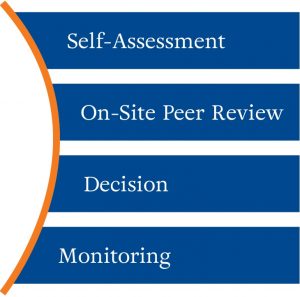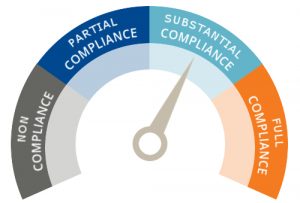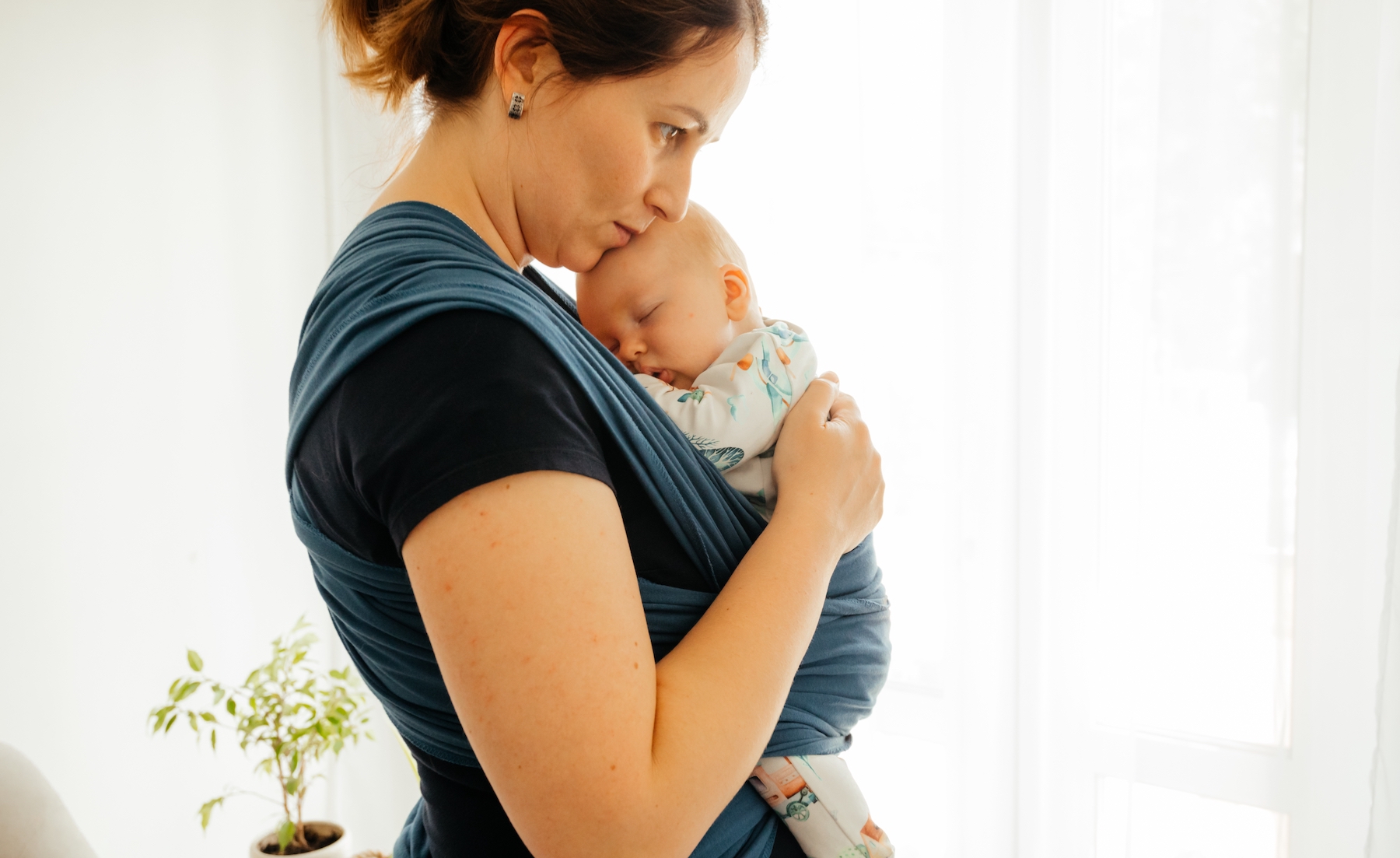Accreditation of Intercountry Adoption Service Providers
Adoption Advocate No. 141
Accreditation has long been used by professions to validate the qualifications of providers and the quality of services. This paper examines the accreditation of intercountry adoption service providers, taking a deep dive into the history, approach, and impact of regulation and accreditation.
History and Description of Accreditation in the United States
While slight variations exist, accreditors in the fields of social services, health care, rehabilitation services, and higher education define accreditation as an external review process used to validate an organization’s compliance with industry standards and provide a public recognition of quality.1 Accreditation is intended to be a voluntary process although some state and federal authorities have established provisions mandating accreditation for certain professions or granting some recognition or benefits to accredited organizations.2
Standards for accreditation are developed by the accrediting entities, and typically address management and service delivery practices. The process for standards development typically includes consideration of research, practice wisdom, public policy, and input from service providers, subject matter experts, clients, and others.3 While these standards include important safety and protection measures, they generally avoid duplicating the basic safety and consumer protection measures typically included in licensing standards. Accreditation standards are designed to build beyond minimum standards required for licensure.

The process of accreditation includes four core features: self-assessment, on-site review by peers, decision, and ongoing monitoring.4
The process begins with a self-assessment during which organizations read and understand the standards, assess their own compliance, and take steps to improve practice where they have not met standards. The next phase is the on-site review for which most accrediting entities rely on peers, professionals from other accredited organizations, to conduct the evaluation. Because these peer reviewers are experienced, highly credentialed, and have been involved in accreditation at their own organizations, they bring a deep knowledge of current practice and standards, and can draw from experience applying and evaluating the standards. Common monitoring and oversight activities include periodic and event-based reporting and review of complaints.
The Hague Convention on Intercountry Adoption
In the early 1990s with a steady growth of intercountry adoptions, an emerging specialized profession, and scandals causing significant international concern, world leaders looked to enhance collaboration and coordination of intercountry adoption services. In January 1988, the Hague Conference on Private International Law (Hague Conference) began to draft a new Convention on intercountry adoption.5 An extensive report on intercountry adoptions described serious concerns regarding intercountry adoption practices, and identified areas for building in safeguards and protections for children and families.6
The Hague Convention on Protection of Children and Cooperation in Respect of Intercountry Adoption (the Convention) establishes administrative processes to coordinate the delivery of services and obliges countries to take special precautions to prevent the abduction, sale, and trafficking of children.7 The Convention requires each country to designate a Central Authority.8 During the deliberations, serious concerns were raised about continuing to allow the involvement of private entities in international adoption, as was common in the United States, so a compromise was reached allowing accredited, nonprofit agencies and approved persons to provide certain adoption services.9 The final draft of the Convention was approved and signed on May 29, 1993.
U.S. Law and Regulations Governing Accreditation
In October 2000, the U.S. implementing legislation, the Intercountry Adoption Act (IAA), was enacted, designating the Department of State (the Department) as the U.S. Central Authority and setting basic provisions for the accreditation process and standards. The Department went on to issue proposed regulations in September 2003.10 Despite having received comments on an earlier draft and numerous community engagement activities, the Department continued to receive significant and conflicting opinions about the proposed regulations. The Department spent two years reviewing over 1,500 comments on the proposed rule and revising the regulations.11 Many of the conflicting comments either sought stronger protections for children and families or sought to eliminate standards thought to be unnecessarily burdensome.
The final rule was published in the Federal Register on February 15, 2006, and includes an extensive set of responses to the comments received, providing detailed attention to key controversial areas of the standards such as supervised providers, professional liability insurance, personnel qualifications, and waivers of liability. These responses provide the best source of interpretive guidance on the regulations, shedding light on the intent and scope of many of the standards and process requirements. The final rule also sets forth an accreditation process that combines elements of accreditation and state licensure. Like accreditation systems, the standards go well beyond what is typical of licensing, the process does not include annual on-site reviews, and achievement of accreditation requires substantial, not full, compliance. Like state licensing, the standards are codified in regulations written by government officials, not by the field itself, and provisions for oversight and adverse actions are more closely aligned with the typical compliance approach used by regulators.
Designation of Accrediting Entities
Just after the draft rule was published, the Department issued a Request for Statements of Interest from accrediting entities. The Department received 12 applications and entered discussions with six of the applicants.12 In July 2006, the Department authorized two accrediting entities, the Council on Accreditation (COA) and the Colorado Department of Human Services (CDHS). The designations of both a private accrediting entity and a state licensing authority provided an opportune foundation for establishing an accreditation system that is essentially a hybrid of accreditation and licensure. While the Department ensured the accreditation processes between COA and CDHS were similar, there were some key differences. COA utilized volunteer peer reviewers and CDHS used licensing staff to conduct reviews, and the fees charged by CDHS were substantially lower. Having multiple accrediting entities gives adoption service providers a choice in accrediting bodies, creating incentives to drive up quality, and provides an essential backup should one accrediting entity discontinue its services.
The agreements with the Department included special tasks for the initial application period and required CDHS and COA to expend their own funds for preparations needed to launch the accreditation system.13 Preparatory tasks were extensive and included the development of operational procedures and tools, fee schedules, explanatory guidance on the standards, training for evaluators, and the Substantial Compliance System (SCS) to be used for evaluating applicants. Over the years, the Department sought to engage additional accrediting entities but no others were authorized until Intercountry Adoption Accreditation and Maintenance Entity (IAAME) was designated in 2017.14
Initial Accreditation Applications and Ratification of the Convention
The accreditation process formally kicked off in October 2006, when applications for accreditation were made available.15 By December of that year, over 325 adoption service providers had filed initial applications for accreditation, far exceeding early projections of 200 applicants. COA and CDHS worked very closely with the Department over the next year and a half to train staff, evaluators, and adoption service providers, conduct the accreditation reviews, and make decisions on the initial applications. While many of the initial applicants achieved accreditation, a large number did not complete the process as the scope of the requirements became more apparent and the exceptions to the accreditation requirement became clearer. In the first round of accreditation reviews, 12 adoption service providers were denied accreditation.16 By April 1, 2008, when the Convention took effect over 220 adoption service providers had achieved accreditation, temporary accreditation, or approval.
Two-Tier System and the Universal Accreditation Act (UAA)
Within a few years of the accreditation requirements being in effect, it became increasingly clear that because the requirements only applied to adoptions involving other countries who had implemented the Convention, a two-tier system of adoption services had emerged: one for Convention adoptions and another for non-Convention adoptions. This was primarily evident with incoming adoptions because the number of outgoing adoptions (U.S. citizen children leaving the U.S. for adoption) was small and the countries receiving the children were all Convention countries. Given the dual standards, the intercountry adoption community sought to provide more uniformity in their practices and establish the same safeguards for children and families that existed within the Hague Convention’s framework by calling for accreditation of all adoption service providers providing intercountry adoption services. In response, the Universal Accreditation Act (UAA) was passed in 2013 which applied the accreditation requirements to incoming international adoptions from all countries.17
While this has significantly improved the oversight of adoptions from non-Convention countries, it remains a challenge to achieve or expect full compliance with all standards. Non-Convention countries have not agreed to the Convention, may not have the necessary resources to coordinate adoption activities, and may have laws, policies, or practices that are not consistent with the Convention. In its role as the Central Authority, the Department of State can coordinate resolution of questions on conflicting laws or policies through bilateral engagements with its foreign counterparts.
Substantial, Not Full, Compliance Is Required
According to the Intercountry Adoption Act and the regulations, accreditation can be granted when an agency is found to be in “substantial compliance” with the standards. In 2007 COA and CDHS collaborated with the Department to develop the rating system including weighting of the standards and the criteria for achieving “substantial compliance.”18 The substantial compliance system (SCS) developed by CDHS and COA specified a four-point rating system describing levels of compliance ranging from full compliance to non-compliance.

The SCS also included a weight for each of the accreditation standards: mandatory, critical, or foundational. This first iteration of the SCS included some lower weighted standards intended to allow the accrediting entities time to assess the feasibility, cost, and value of implementation of some key standards. Recently, revisions to the weighting of the standards were announced and will soon be implemented as the second iteration of the SCS, raising the bar of compliance on certain key standards.19 In the new SCS, 32% of the standards (46) have a higher weight, tipping the SCS much closer to requiring full compliance.
Accreditation Is Not a Guarantee of Compliance
It is important to recognize, as the Department does, that harm to children, birth parents, prospective adoptive parents, adoptive parents, and adoptees caused by serious failures to comply are unacceptable and undermine confidence in the system.20 At the same time, it is important to understand that while providers strive for compliance and high quality, accreditation cannot guarantee compliance. The regulations clearly convey that accreditation is not a guarantee that an accredited agency will fully comply with every standard in every case.
Conferral and maintenance of accreditation … establishes only that the accrediting entity has concluded, in accordance with the standards and procedures of this part, that the agency or person conducts adoption services in substantial compliance with the applicable standards set forth in this part; it is not a guarantee that in any specific case the accredited agency... is providing adoption services consistently with the Convention, the IAA, the regulations implementing the IAA, or any other applicable law, whether Federal, State, or foreign.21
While the standards are intended to prevent such failures, it is impossible to prevent every violation. The accreditation provisions set forth adverse actions with progressive levels of severity, and when there are patterns of repeated or egregious violations, more severe sanctions are applied, and criminal and civil penalties are available. Minor violations can be common, and the accrediting entities make available information on substantiated complaints and adverse actions so that consumers and other stakeholders can take full consideration of the severity and frequency of any compliance issues.
Accrediting Entities Are Not Law Enforcement
The authors of the Hague Convention acknowledged that the Convention addressed civil and administrative procedures, not criminal proceedings, and while the Convention could help prevent abuses, law enforcement would continue its work to detect and hold people accountable for criminal abuses in adoption.22 The IAA and the regulations included new provisions for criminal and civil penalties for providing adoption services without accreditation and certain egregious violations, but did not directly address law enforcement’s role or authority, already in place for criminal abuses. Accrediting entities are required to coordinate activity with federal and state law enforcement authorities through the Department when criminal violations are suspected, not just when they are substantiated, to minimize the risk that an accrediting entity’s actions might compromise a law enforcement investigation.
Enforcement Should Be Rigorous, but Not a “Gotcha” Process
The accreditation regulations set forth a process that requires close supervision of adoption service providers and set the expectation that the accrediting entity will have a fair, objective process for performing its duties. Objective reviewers do not embark on reviews with a goal or expectation of finding wrongdoing, and strong, defensible accreditation decisions are fact-based, objective, and supported by evidence and a consistent application of procedures. Accrediting entities typically maintain procedures that are thorough enough to uncover patterns of non-compliance but are not designed to review every case, every transaction, and every document. They rely upon periodic and event-based reporting in addition to the review of complaints to surface atypical situations and serious compliance issues. Complying with the demands of the accreditation process requires the adoption service provider and the accrediting entities to devote significant resources and attention that diverts valuable resources away from service delivery, so it is important to ensure the right balance of accreditation activities that provide a rigorous accreditation system without being overly burdensome.
One licensing official describes agencies’ fears of licensing oversight as based in beliefs that they have no voice or power and that the enforcement process invokes fear of police action and punishment.23 She goes on to suggest that “providers who are meeting licensing requirements, or who are making honest efforts to achieve compliance, need not fear enforcement activities. Rather, they should look upon interactions with licensors as opportunities to learn more” and be able to improve the quality of their services.24 While this is ideal, it does not appear to be the current context of the enforcement activities. A return to a more quality-driven approach should provide better opportunities to improve the strength of organizations and the quality of adoption services.
A New Opportunity
In April 2018, IAAME assumed accreditation oversight responsibility.25 CDHS previously ended its role as an accrediting entity in 2012, and COA ended its role in 2018. Adoption service providers report that oversight has expanded dramatically with an increased number of complaint reviews, increasing volumes of document reviews, and an increasing volume and severity of adverse actions. While some have suggested this increased oversight is necessary, there are no comprehensive assessments of abuses available to demonstrate that need. The number of accredited adoption service providers is rapidly declining with over 20% of accredited agencies voluntarily or involuntarily losing their accreditation since April 2018. At the same time, the number of children adopted internationally has continued to decline, down from its peak of nearly 23,000 in 2004 to just over 4,000 in 2018, and children being adopted are typically much older and have more significant special needs than those who were adopted when the accreditation system was first developed. Today, lawmakers, the Department, accrediting entities, adoption service providers, and the adoption community have a unique opportunity to closely examine the state of intercountry adoption and set a new path forward. Such an assessment should begin with the following foundational actions:
- Given the broad nature of changes in intercountry adoption, an assessment of the current scale and types of abuses in adoption and the needs of children being adopted could help the Department, accrediting entities, the adoption community, and our foreign partners better understand what is necessary and appropriate to better protect against fraud and abuses and improve the quality of services to children and families.
- Lawmakers have an opportunity to consider extending the benefits of the UAA protections to American children being adopted to non-Convention countries and to reconsider the effectiveness of certain aspects of the law relating to the accreditation standards and process to ensure the law and activities of the Department are best positioned to safeguard intercountry adoption as a viable option for children in need of permanency.
- Updates to the regulations are needed, especially regarding relative adoptions and the preparation and training of prospective adoptive parents. Regulations that have not shown a significant impact on the aims of the Convention and the IAA should be eliminated.
- Accreditation procedures can be reviewed to ensure an appropriate balance of rigor without being overly burdensome, and analysis of compliance data can inform revision of standards, updates to the SCS, and training and quality improvement opportunities for adoption service providers.
Now is the time to ensure the accreditation system is living up to what was intended by the Hague Convention, the IAA, and the UAA: that it provides the necessary protections and promotes a high quality of service without preventing adoption service providers from serving a vulnerable population of children and families who would benefit greatly from intercountry adoption.
References
- Brommel, S. M. (2006). A historical analysis: The Council on Accreditation for Children and Family Services (Doctoral dissertation). Retrieved from Proquest. (UMI Number: 3230153); Eaton, J. (2015). An overview of U.S. accreditation. Available at: https://www.chea.org/overview-us-accreditation; The Joint Commission: inspiring health care excellence (2018) https://www.jointcommission.org/-/media/tjc/documents/about-us/inspiring_health_care_excellence_brochure.pdf; Hunter, A. F. (2014) The Commission on Accreditation of Rehabilitation Facilities (CARF International) – A historical analysis. Available at: https://yorkspace.library.yorku.ca/xmlui/handle/10315/30193
- Federal mandates include requirements for accreditation of Opioid Treatment Programs, Intercountry Adoption Services, and most recently Residential Treatment Centers who care for children in foster care.
- Brommel, S. M. (2006). A historical analysis: The Council on Accreditation for Children and Family Services (Doctoral dissertation). Retrieved from Proquest. (UMI Number: 3230153); Council on Higher Education Accreditation (2006) Accrediting Organizations in the United States: How Do They Operate to Assure Quality? (Fact Sheet #5). Available at: https://www.chea.org/accrediting-organizations-us-how-do-they-operate-assure-quality; The Joint Commission: inspiring health care excellence (2018) https://www.jointcommission.org/-/media/tjc/documents/about-us/inspiring_health_care_excellence_brochure.pdf; Hunter, A. F. (2014) The Commission on Accreditation of Rehabilitation Facilities (CARF International) – A historical analysis. Available at: https://yorkspace.library.yorku.ca/xmlui/handle/10315/30193
- Brommel, S. M. (2006). A historical analysis: The Council on Accreditation for Children and Family Services (Doctoral dissertation). Retrieved from Proquest. (UMI Number: 3230153); Eaton, J. (2015). An overview of U.S. accreditation. Available at: https://www.chea.org/overview-us-accreditation; The Joint Commission: inspiring health care excellence (2018) https://www.jointcommission.org/-/media/tjc/documents/about-us/inspiring_health_care_excellence_brochure.pdf; Hunter, A. F. (2014) The Commission on Accreditation of Rehabilitation Facilities (CARF International) – A historical analysis. Available at: https://yorkspace.library.yorku.ca/xmlui/handle/10315/30193
- Van Loon, J.H.A. (1990). Report on Intercountry Adoption, by J.H.A. van Loon (Prel. Doc. No 1). Available at: https://www.hcch.net/en/publications-and-studies/details4/?pid=918
- Ibid.
- HCCH, the Convention on Protection of Children and Cooperation in Respect of Intercountry Adoption. Available at: https://www.hcch.net/en/instruments/conventions/full-text/?cid=69
- HCCH, Proceedings of the Seventeenth Session (1993) - Adoption co-operation. Available at: https://www.hcch.net/en/publications-and-studies/details4/?pid=918
- Note: While the Convention, IAA, UAA and the Regulations provide some special provisions for Approved Persons (individuals and for-profit entities) those distinctions are not referenced or examined in this paper. The use of the term “accreditation” throughout incorporates the concept of “approval” of persons. Parra-Aranguren (1994) Explanatory Report on the 1993 Hague Intercountry Adoption Convention. Available at: https://www.hcch.net/en/publications-and-studies/details4/?pid=2279
- Hague Convention on Intercountry Adoption; Intercountry Adoption Act of 2000; Accreditation of Agencies; Approval of Persons; Preservation of Convention Records, A Proposed Rule by the State Department, 68 FR 54063, September 15, 2003. Federal Register: The Daily Journal of the United States. Available at: https://www.federalregister.gov/documents/2003/09/15/03-22650/hague-convention-on-intercountry-adoption-intercountry-adoption-act-of-2000-accreditation-of
- Government Accountability Office (2005). Foreign affairs: Agencies have improved the intercountry adoption process, but further enhancements are needed. Available at: https://www.gao.gov/products/gao-06-133#summary_recommend
- Ibid.
- Memorandum of Agreement between the U.S. Department of State and the Colorado Department of Human services Regarding Performance of Duties as an Accrediting Entity Under the Intercountry Adoption Act of 2000. Fed. Reg. Vol. 71, No. 129, July 6, 2006. Available at: https://www.federalregister.gov/documents/2006/07/06/E6-10573/memorandum-of-agreement-between-the-us-department-of-state-and-the-colorado-department-of-human; Memorandum of Agreement Between the U.S. Department of State and the Council on Accreditation Regarding Performance of Duties as an Accrediting Entity Under the Intercountry Adoption Act of 2000. Fed. Reg. Vol. 71, No. 137, July 18, 2006. Available at: https://www.federalregister.gov/documents/2006/07/18/E6-11362/memorandum-of-agreement-between-the-us-department-of-state-and-the-council-on-accreditation
- Memorandum of Agreement Between the U.S. Department of State Bureau of Consular Affairs and Intercountry Adoption Accreditation and Maintenance Entity, Inc. Fed. Reg. Vol. 82, No. 40614, August 25, 2017. Available at: https://www.federalregister.gov/documents/2017/08/25/2017-18040/memorandum-of-agreement-between-the-us-department-of-state-bureau-of-consular-affairs-and
- Department of State (2006). Deadline to Apply for Accreditation or Approval Under the Hague Adoption Convention Set For November 17, 2006. Available at: https://2001-2009.state.gov/r/pa/prs/ps/2006/73629.htm
- Department of State. Agencies Denied or Subject to Adverse Action. Available at: https://travel.state.gov/wp-content/travel/en/Intercountry-Adoption/about-adoption-service-providers/agencies-denied-or-subject-to-adverse-action.html
- Intercountry Adoption Universal Accreditation Act of 2012, 42 USC 14901 (2013).
- Council on Accreditation (2007). Understanding the Hague Accreditation and Approval Standards and the Substantial Compliance System.
- Department of State (2019). Adoption Notice: Updated Substantial Compliance System. Available at: https://travel.state.gov/wp-content/travel/en/News/Intercountry-Adoption-News/adoption-notice--updated-substantial-compliance-system-.html
- Department of State (2019). National Adoption Month Message from Assistant Secretary Carl C. Risch. Available at: https://travel.state.gov/wp-content/dam/NEWadoptionassets/pdfs/2019%20National%20
Adoption%20Month%20Statement%20by%20Assistant%20Secretary%20Risch.pdf - 22 CFR Part 96.12 (c)
- HCCH, Proceedings of the Seventeenth Session (1993) - Adoption co-operation. Available at: https://www.hcch.net/en/publications-and-studies/details4/?pid=918
- Colbert, J. (2000). What is Enforcement? Taking the Mystery out of the Licensing Process. Presented at the Annual Conference of the National Association for the Education of Young Children in Atlanta, GA, November 11, 2000.
- Ibid.
- Department of State (2018). Adoption Notice: Transfer of Monitoring and Oversight Responsibilities to IAAME. Available at: https://travel.state.gov/wp-content/travel/en/News/Intercountry-Adoption-News/adoption-notice---transfer-of-monitoring-and-oversight-responsib.html




